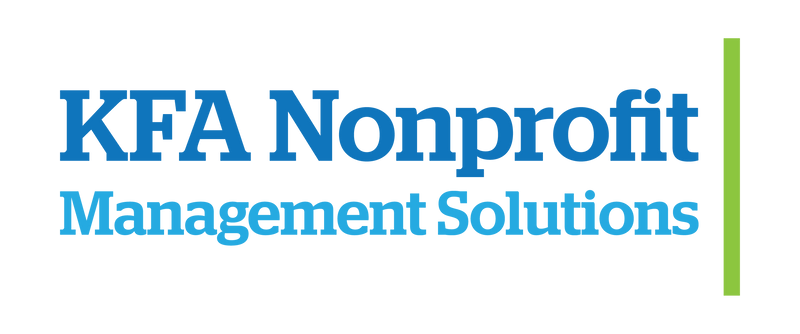Federal Grant Slowdown: Preparing for Funding Interruptions Amid Growing Uncertainty
Over the past three weeks, the federal grants landscape has slowed to a near standstill. Traditionally, this time of year sees more than 100 new federal grant opportunities opening each week. However, the current flow has diminished to just 2-3 new postings weekly—a striking deviation with potentially severe implications for nonprofits, institutions of higher education, and governmental and quasi-governmental agencies.
Recent developments, including the “attempted” federal funding freeze and program reviews, add even more uncertainty to an already precarious situation. Nonprofit organizations and public institutions that rely heavily on federal grants may face significant operational challenges in the months ahead. As confusion and delays ripple across the funding ecosystem, it’s crucial for organizations to act now to prepare for potential funding interruptions.
Federal Funding Slowdown: What’s Happening?
The slowdown in new federal grants coincides with broader disruptions in federal funding processes. A partial funding freeze, initiated by the Trump administration and later paused by a federal judge, has already caused confusion and operational disruptions for numerous programs.
The freeze initially targeted open awards and blocked access to funds across a wide range of programs. While temporary exemptions were supposedly issued for Medicaid, SNAP, Pell Grants, and other programs, the disarray has highlighted the fragility of the federal funding pipeline.
The scope of the freeze extended to hundreds of federal programs, many of which remain under review. Advocacy groups, nonprofits, educational institutions, and public health organizations have expressed alarm at the potential impacts, warning of catastrophic consequences if funding interruptions persist.
Key Impacts and Areas of Concern
The slowdown and funding freeze have already caused ripple effects across sectors, underscoring the need for organizations to brace for uncertainty. Below are some of the key challenges emerging from the current landscape:
-
Delays in Funding Access
Many organizations reported difficulties accessing federal funds even for programs supposedly exempted from the freeze. For example, some state Medicaid agencies were temporarily unable to access funds, and Head Start programs faced disruptions that could have led to closures. -
Disruption to Critical Services
Programs like Meals on Wheels, which serve over 2 million senior citizens annually, have been caught in the crossfire. Conflicting information has left organizations in limbo, unable to confirm whether they will be impacted. -
Research on Hold
Universities and research institutions are grappling with the uncertainty. Some grant-funded projects have been paused, deadlines missed, and critical research delayed. The National Science Foundation even suspended its grant review panels in response to the freeze. Now we’re hearing that federally negotiated indirect cost rates will be capped at 15% which will deal an enormous blow to research institutions throughout the country. -
Global Implications
The freeze has also disrupted US-funded humanitarian aid abroad. Programs in Gaza and Ukraine are facing dire consequences, with officials warning of potential loss of life if funding interruptions continue.
Preparing for the Road Ahead
Nonprofits, educational institutions, and public agencies must respond quickly to the evolving situation. While the slowdown and funding freezes may ultimately be overcome (although we’re unclear what enforcement action will intervene short of Congressional action which doesn’t appear to be coming), their impacts could persist long after the immediate crisis subsides. Here are five actionable steps to help your organization navigate this challenging period:
1. Diversify Revenue Streams
The current situation underscores the risks of relying too heavily on federal grants alone. Now is the time to explore alternative funding sources, including state and local grants (where they aren’t federal pass-through dollars), private foundations, corporate philanthropy, and individual donors. Diversifying your funding base can help mitigate the impact of federal funding interruptions.
2. Strengthen Financial Resilience
Build up your organization’s financial reserves to weather potential funding gaps. This may involve reducing discretionary spending, postponing non-essential initiatives, or seeking bridge funding to maintain operational stability.
3. Evaluate and Prioritize Programs
Use this period to assess your current programs and identify those most critical to your mission. Demonstrating strong outcomes and efficient use of funds will not only strengthen your case for future grants but also help you make tough decisions if resources become limited.
4. Improve Grant Application Strategies
With fewer grants available, competition is likely to intensify. Focus on honing your ability to craft compelling, high-quality applications that demonstrate a clear alignment with funders’ priorities. Build relationships with grant officers and stay informed about upcoming opportunities to give your organization a competitive edge.
5. Advocate for Stability
Join advocacy efforts to call for greater transparency and stability in federal funding processes. Collaborative advocacy with peer organizations can amplify your voice and help influence policy decisions that impact the funding ecosystem.
Looking Ahead: Our Crystal Ball is Still Cloudy
The current chaos in federal grant funding is a wake-up call for organizations to mobilize and kick PR machines into full gear to ensure that the public fully understands the value and impact of the good you do. While the immediate future remains uncertain, the key to weathering these challenges lies in preparing for the worst, working hard for the best, staying informed, and adapting as the landscape changes.
At KFA, we understand how critical federal grants are to your mission. Our team is here to help you navigate this uncertain landscape, from identifying alternative funding sources (like COPA foundations and settlement funds) to developing winning grant proposals. Contact us today to learn how we can support your organization during these challenging times.
While we’re facing a perfect storm of uncertainty, taking proactive steps to diversify funding, strengthen resilience, and advocate for stability, your organization can navigate this turbulent period and emerge stronger. Don’t wait for the situation to stabilize—act now to protect your programs, your mission, and the communities you serve.
